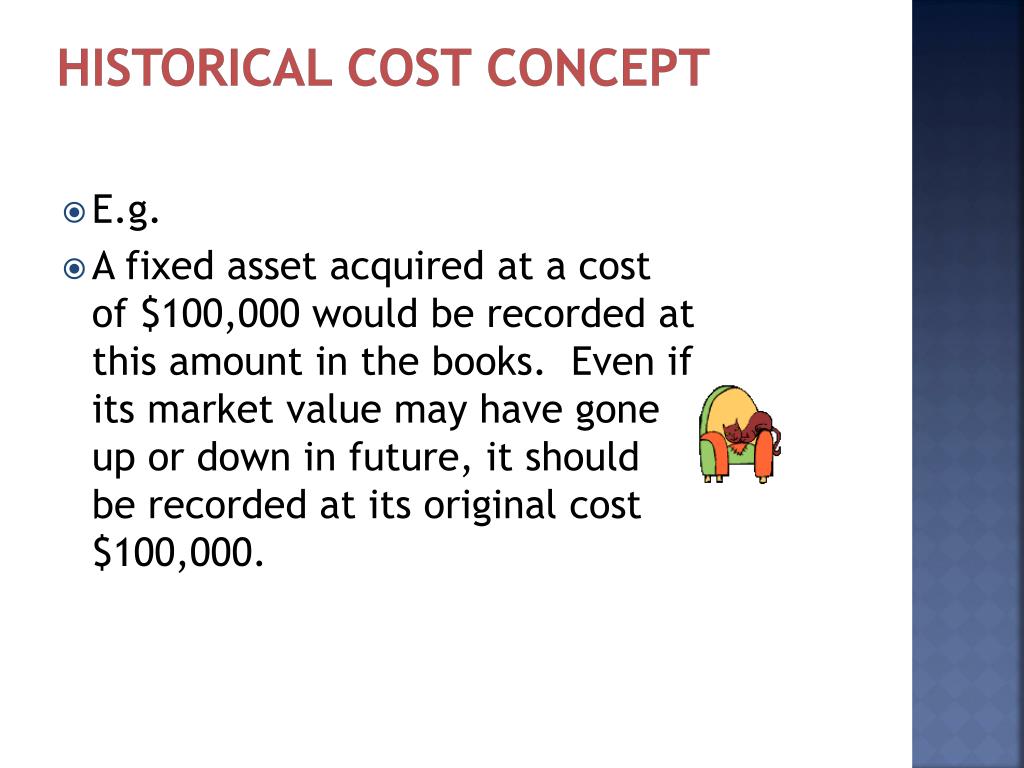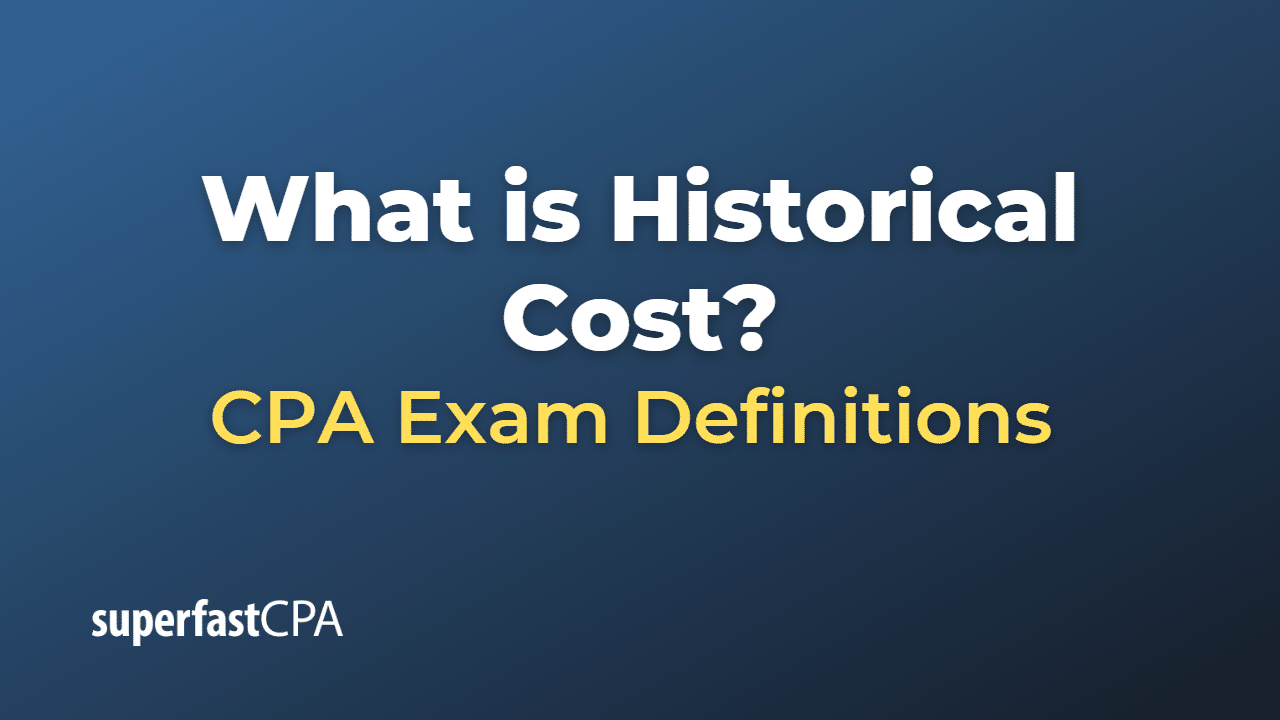- Bookkeeping
-
by pohoda

When bonds or other debts are issued or received, they are recorded on the balance sheet at the original acquisition price. It would therefore be acceptable for an entity to revalue freehold properties every three years. The revaluations must be made with sufficient regularity to ensure that the carrying value does not differ materially from market value in subsequent years. A surplus on revaluation would be recorded as a reserve movement, not as income. Suppose a company bought an office building worth $5 million 10 years ago, with its current market value is $30 million. Its balance sheet will still record this tangible asset at the original price of $5 million.
Why You Can Trust Finance Strategists
For example, the historical cost of an office building was $10 million when it was purchased 20 years ago, but its current market value is three times that figure, because it is located in a thriving downtown area. The historical cost concept differs the profitability ratio and company evaluation from the fair value concept, which reflects the current market value of a company’s assets. Asset valuation at the original price avoids overvaluation in a dynamic market and is a good way to figure out capital expenditures.
How the Historical Cost Principle Affects Business Accounting

Marketable securities aren’t recorded at historical costs because they are highly liquid assets. For instance, share prices in investments may change, leading to an equivalent change in the asset’s valuation on the balance sheet. Such price adjustments, however, can help companies provide their investors and shareholders with complete transparency regarding asset valuation. A company’s balance sheet should reflect all assets, liabilities, and equities at this cost, regardless of how much they have appreciated over time. Comparing an asset’s current value to its original price shows how it has performed financially over time.
- This method ensures a systematic allocation of the asset’s cost, aligning with the matching principle by correlating expenses with the revenues they help generate.
- For information pertaining to the registration status of 11 Financial, please contact the state securities regulators for those states in which 11 Financial maintains a registration filing.
- This method is based on a company’s past transactions and is conservative, easy to calculate, and reliable.
- Historical cost is often calculated as the cash or cash equivalent cost at the time of purchase.
How to calculate the historical cost of an asset
A common example of mark-to-market assets includes marketable securities held for trading purposes. Securities are marked upward or downward to reflect their true value under a given market condition as the market swings. This allows for a more accurate representation of what the company would receive if the assets were sold immediately and it’s useful for highly liquid assets. Historical cost accounting is inadequate for calculating the cost of replacing depreciable fixed assets.
For example, if your business vehicle has been in an accident and you want to sell it, its condition would almost certainly not match the book value. They are fact-based and can provide financial statement users with reliable and accurate information. New machine with the same specification would cost $40,000 today due to inflation. Our mission is to empower readers with the most factual and reliable financial information possible to help them make informed decisions for their individual needs. The articles and research support materials available on this site are educational and are not intended to be investment or tax advice.
The argument for using historical costs is that accounting is concerned with past transactions and that the information and reports that accounting generates need to be consistent and comparable. Because fair values may be highly volatile and judgmental, therefore comparability and consistency many be reduced if values of the assets were to change from period to period. The historical cost principle (also called the cost principle) states that virtually all business assets must be recorded as the value on the date the asset was bought or assumed ownership.
The cost in cash or cash equivalent at the time of purchase is frequently used to compute historical cost. This covers the asset’s acquisition price as well as any additional costs necessary to set up and prepare it for use. According to this depreciation-adjusted cost principle, if the asset’s value becomes impaired and falls below its reduced recorded price, an impairment amount is levied to bring that recorded value to its net realization cost. Historical cost prevents the overstating of an asset’s value in cases where appreciation is the result of market volatility. It’s one of the basic accounting principles used in the U.S. under generally accepted accounting principles (GAAP).
In the example above, Company ABC bought multiple properties in New York 100 years ago for $50,000. Now, 100 years later, a real estate appraiser inspects all of the properties and concludes that their expected market value is $50 million. The current market value of the machine in its present condition is $6,000. Yarilet Perez is an experienced multimedia journalist and fact-checker with a Master of Science in Journalism.
The market value could have changed between the initial purchase and when you sell the item. The different values can make it harder to determine your company’s financial health. Since fair market values and replacement costs are left up to estimates and opinions, the FASB has decided to stick with the historical cost principle because it is reliable and objective. In current years, the FASB as well as the IASB has become more open to fair value information. Under the historical cost basis of accounting, assets and liabilities are recorded at their values when first acquired. Accounting standards vary as to how the resultant change in value of an asset or liability is recorded; it may be included in income or as a direct change to shareholders‘ equity.
This method ensures that expenses are matched with revenues generated by the asset, adhering to the matching principle in accounting. However, this can sometimes result in lower depreciation expenses compared to the current market value, potentially inflating net income. For example, a machine bought for $50,000 and depreciated over ten years will have a lower annual depreciation expense than if it were valued at its current market price of $80,000.
Therefore, the use of historical cost may result in reporting profits that are not sustainable in the long term. One potential downside of using the Historical Cost Convention is that assets and liabilities may not be accurately reflective of their current market value. As such, it may be difficult for investors and other stakeholders to assess a company’s true financial health and performance.
